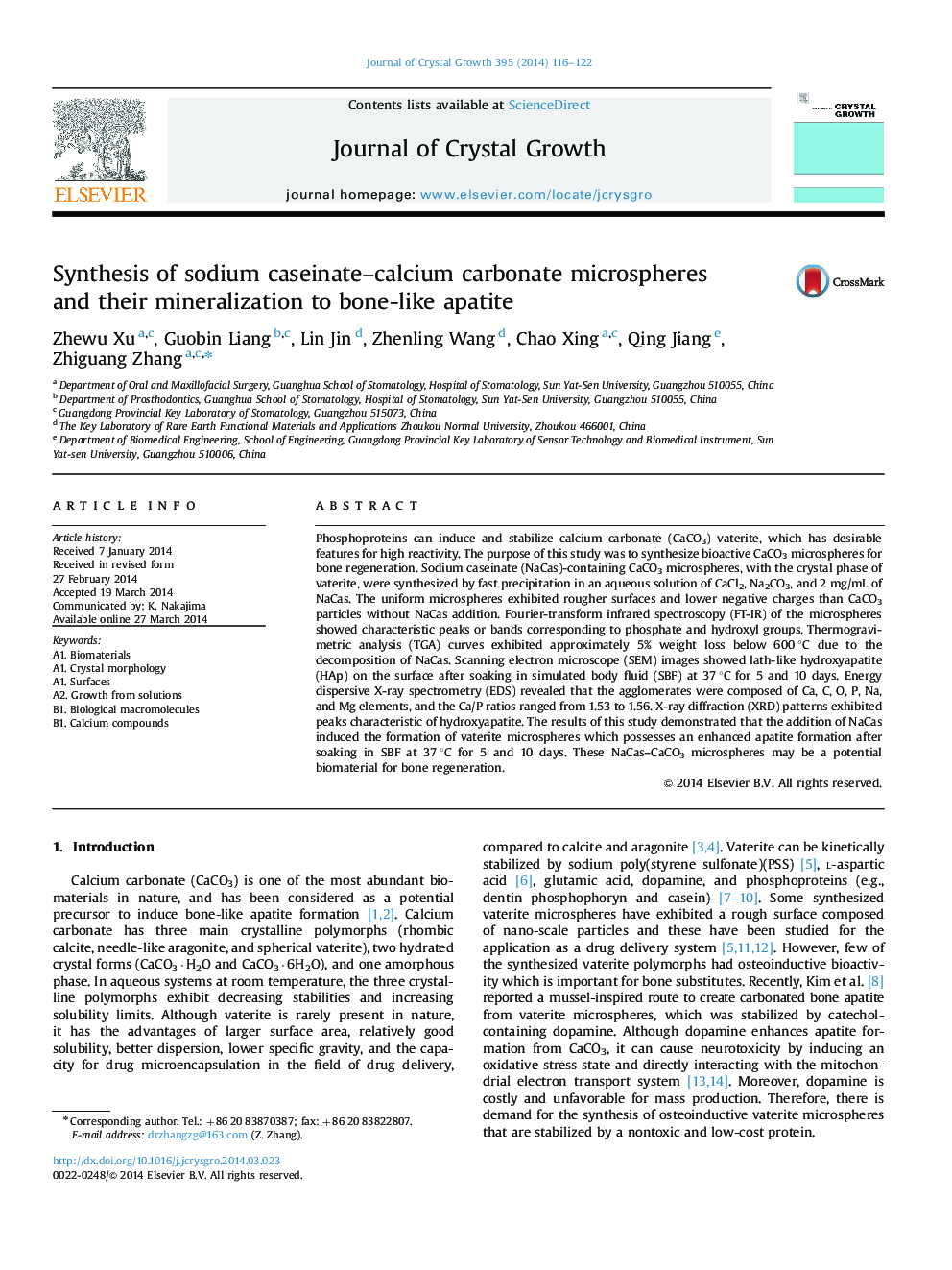| کد مقاله | کد نشریه | سال انتشار | مقاله انگلیسی | نسخه تمام متن |
|---|---|---|---|---|
| 1790548 | 1524434 | 2014 | 7 صفحه PDF | دانلود رایگان |
• Vaterite is an unstable polymorph of CaCO3 that possesses interesting reactivity.
• Sodium caseinate (NaCas) can stabilize vaterite to prevent conversion to calcite.
• Vaterite microspheres were synthesized with NaCas and characterized.
• Microspheres were soaked in simulated body fluid to form bone-like apatite.
• The presented method has applications to biomaterials for bone regeneration.
Phosphoproteins can induce and stabilize calcium carbonate (CaCO3) vaterite, which has desirable features for high reactivity. The purpose of this study was to synthesize bioactive CaCO3 microspheres for bone regeneration. Sodium caseinate (NaCas)-containing CaCO3 microspheres, with the crystal phase of vaterite, were synthesized by fast precipitation in an aqueous solution of CaCl2, Na2CO3, and 2 mg/mL of NaCas. The uniform microspheres exhibited rougher surfaces and lower negative charges than CaCO3 particles without NaCas addition. Fourier-transform infrared spectroscopy (FT-IR) of the microspheres showed characteristic peaks or bands corresponding to phosphate and hydroxyl groups. Thermogravimetric analysis (TGA) curves exhibited approximately 5% weight loss below 600 °C due to the decomposition of NaCas. Scanning electron microscope (SEM) images showed lath-like hydroxyapatite (HAp) on the surface after soaking in simulated body fluid (SBF) at 37 °C for 5 and 10 days. Energy dispersive X-ray spectrometry (EDS) revealed that the agglomerates were composed of Ca, C, O, P, Na, and Mg elements, and the Ca/P ratios ranged from 1.53 to 1.56. X-ray diffraction (XRD) patterns exhibited peaks characteristic of hydroxyapatite. The results of this study demonstrated that the addition of NaCas induced the formation of vaterite microspheres which possesses an enhanced apatite formation after soaking in SBF at 37 °C for 5 and 10 days. These NaCas–CaCO3 microspheres may be a potential biomaterial for bone regeneration.
Journal: Journal of Crystal Growth - Volume 395, 1 June 2014, Pages 116–122
